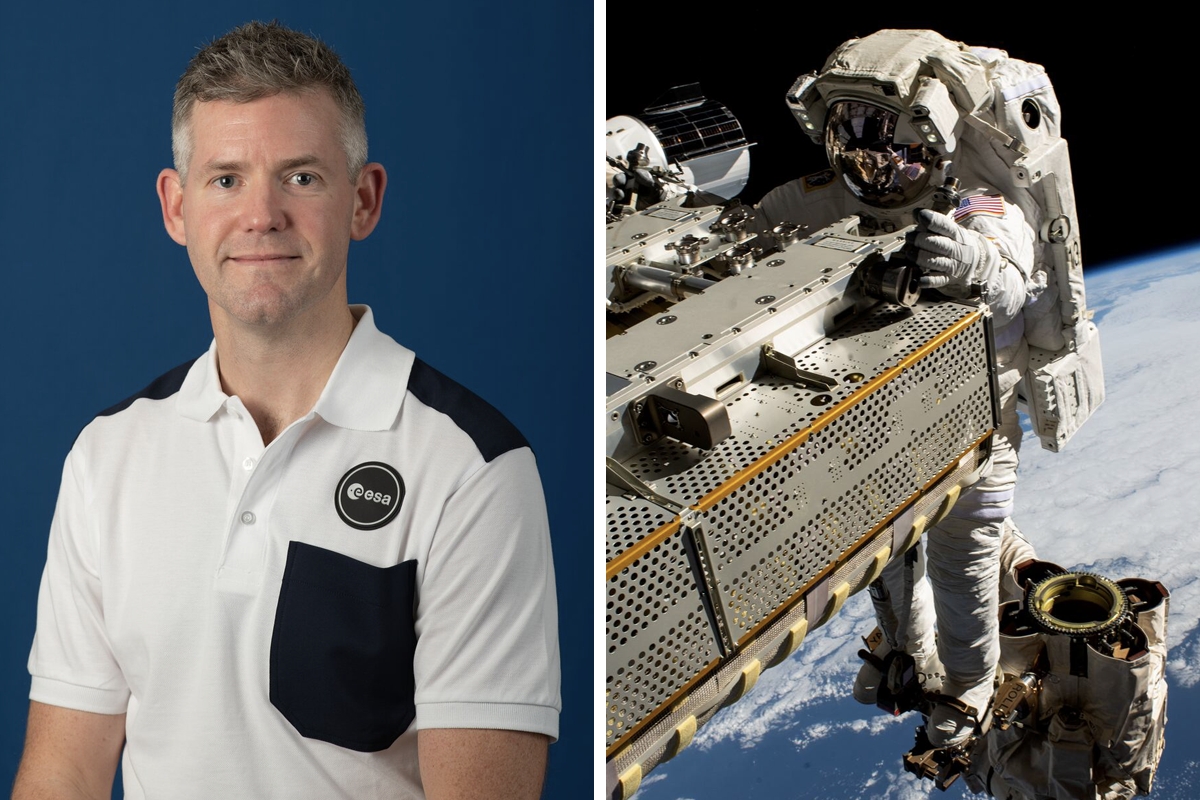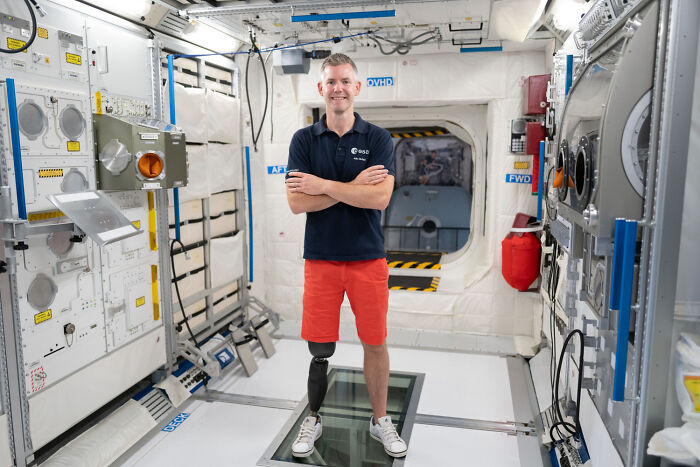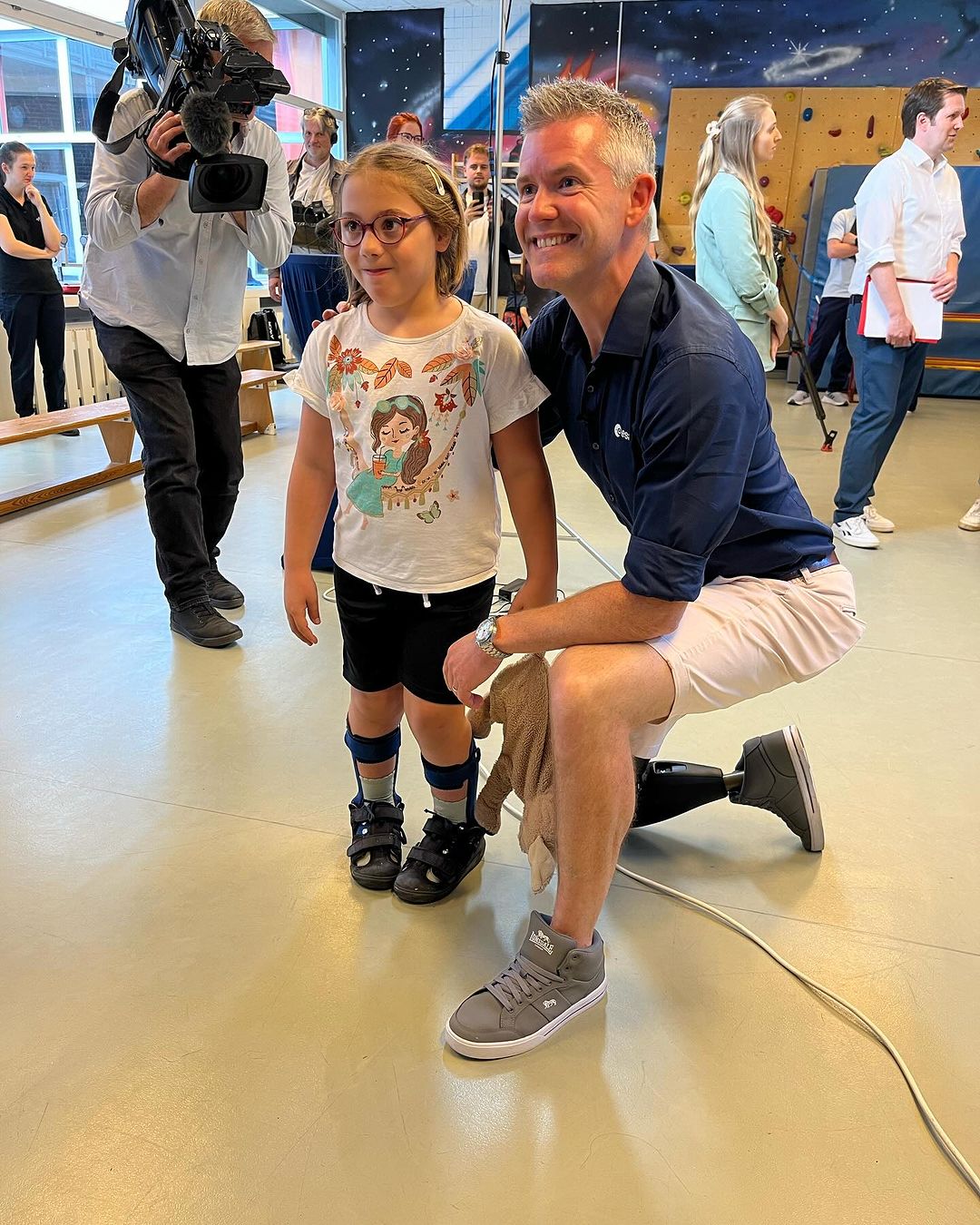
Parastronaut John McFall Is On A Challenging Mission To Enter The International Space Station
There’s a well-known Martin Luther King Jr. quote: “If you can’t fly, then run; if you can’t run, then walk; if you can’t walk, then crawl; but whatever you do, you have to keep moving forward.” And it seems that John McFall is taking it very seriously by constantly giving himself challenging conditions that make him wanna get out of bed full of inspiration and excitement every single morning.
From being an elite athlete to being an orthopedic surgeon, now he aims to be the first person with disabilities to enter the International Space Station by 2030.
More info: ESA
Former medal-winning Paralympic sprinter John McFall is on the way to become the first human being with disabilities to fly to the International Space Station
Image credits: ESA
Image credits: ESA
Former Paralympian John McFall is working on a very exciting and definitely ground-breaking study to see if it’s possible for someone with a physical disability to fly on a long 6-month mission, where he would live and work at the International Space Station (ISS).
The unique study called Fly! was launched back in November 2022 at the Ministerial Council in Paris and John, who became a leg amputee at age 19 following a motorcycle accident, was selected as the very heart of it.
“My background was incredibly useful,” the parastronaut, who also has a master’s degree in biomechanics and gait analysis, shared. “Being an athlete and, obviously, being an amputee, I’m not really a very passive amputee. I’m quite involved in my care. I know how my prosthesis works. I’m a technology demonstrator,” John explained and added that here on Earth, he uses at least 3 prostheses regularly: one for everyday activities, one for cycling and another one for running.
Image credits: John McFall
Image credits: ESA
The Fly! team is investigating for the first time how an astronaut with a physical disability can become a fully integrated crew member on the ISS by focusing on five main topics: medical, training, crew support, spacecraft operations, and ISS operations.
Since June 2023, John has been training at the European Astronaut Centre (EAC) and beyond, where he and the entire scientific team are trying to answer some of the most important questions: for instance, how the volume of his residual limb may change in spaceflight or whether he could do CPR in microgravity without a prosthesis.
“I’m aware that my disability only represents a small proportion of the disabled population. Fly! Feasibility Study is a stepping stone and a platform to encourage the space industry to move towards more inclusive human space exploration,” John said. “Whether I fly or not, what is important is that we continue to challenge humanity’s perception of disability. I hope that Fly! Feasibility Study creates a legacy and opens the door for people across the spectrum of disability to become astronauts.”
And interestingly enough, to this day, instead of finding any barriers, Fly! demonstrates that it would be technically feasible for an astronaut with a physical disability like John’s to travel to space.
There are plenty more things to be tested as part of the study, which will be finished in late 2024, but it will certainly mark a significant milestone towards inclusivity in space exploration.
John’s role in the Fly! project is to create a chance for people with physical disabilities to be involved in human space exploration
Image credits: John McFall
Image credits: John McFall
Image credits: John McFall
The ISS, which is orbiting around 400 kilometers above the Earth, is the largest space station ever built by a collaboration of 5 space agencies and their contractors: NASA (United States), Roscosmos (Russia), ESA (Europe), JAXA (Japan), and CSA (Canada).
If John succeeds and flies into space, this probably will be one of the last missions connected to ISS since NASA recently announced preparations to burn it up and crash into a remote place in the Pacific Ocean somewhere around 2030. You can read more about it here.
Image credits: NASA
Image credits: NASA
Image credits: NASA
No matter how exciting John’s goal to become the first person with disabilities to enter the International Space Station sounds, it isn’t all about him. With his example, the parastronaut wants to change people’s preconceptions of what people with physical disabilities can do, but also should be allowed to do.
Therefore, together with ESA’s Member States and international partners, John and the entire Fly! team are about to make a remarkable footprint in accessible space exploration.
People on the internet shared supportive messages for John
Poll Question
Thanks! Check out the results:
I’ve been following his story since it was first announced. I really do hope he gets his chance and does go to the ISS.
Uhh. Isn't he just and astronaut? I have a cook that only has one leg. I don't call him a paracook.
Absolutrly. He will be a fully trained astronaut. It doesn't matter in zero gravity if he has one or two legs.
Load More Replies...I’ve been following his story since it was first announced. I really do hope he gets his chance and does go to the ISS.
Uhh. Isn't he just and astronaut? I have a cook that only has one leg. I don't call him a paracook.
Absolutrly. He will be a fully trained astronaut. It doesn't matter in zero gravity if he has one or two legs.
Load More Replies...
 Dark Mode
Dark Mode 

 No fees, cancel anytime
No fees, cancel anytime 











































34
4